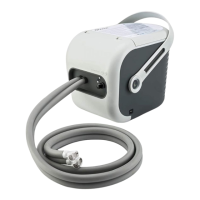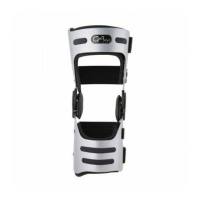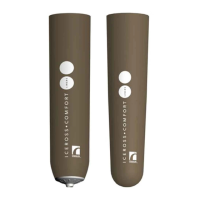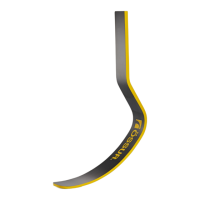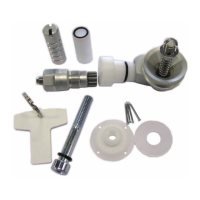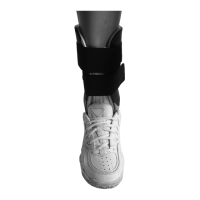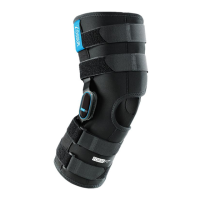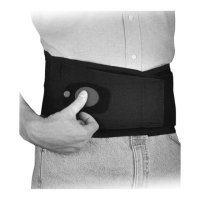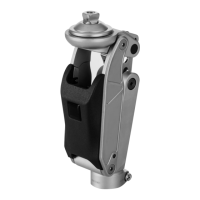12
Guidance and Manufacturer’s Declaration – Electromagnetic Emissions
The device is intended for use in the electromagnetic environment specified below. The customer or user of device should assure that it is used in such an environment.
Immunity Test IEC Test Level Compliance Level Electromagnetic Environment – Guidance
Electrostatic Discharge (ESD)
IEC --
± kV contact
± kV air
± kV contact
± kV air
Floors should be wood, concrete, or ceramic
tile. If floors are covered with synthetic
material, the relative humidity should be at
least %.
Electrical fast transient/burst
IEC --
± kV for power supply lines
± kV for input/output lines
± kV for power supply lines
± kV for input/output lines
Mains power quality should be that of a
typical commercial or hospital environment.
Surge IEC -- ± kV line(s) to line(s)
± kV line(s) to earth
± kV line(s) to line(s)
± kV line(s) to earth
Mains power quality should be that of a
typical commercial or hospital environment.
Voltage dips, Short
interruptions and voltage
variations on power supply
lines IEC --
< % U
T
(> % dip in U
T
) for . cycle.
% U
T
( % dip in U
T
) for cycles.
% U
T
( % dip in U
T
) for cycles.
< % U
T
(>% dip in U
T
) for s.
< % U
T
(> % dip in U
T
) for . cycle.
% U
T
( % dip in U
T
) for cycles.
% U
T
( % dip in U
T
) for cycles.
< % U
T
(>% dip in U
T
) for s.
Mains power quality should be that of a
typical commercial or hospital environment.
If the user of the device requires continued
operation during power mains interruptions,
it is recommended that the device be
powered from an uninterruptible power
supply or a battery.
Power frequency (/ Hz)
magnetic field
IEC --
A/m A/m Power frequency magnetic fields should be at
levels characteristic of a typical location in a
typical commercial or hospital environment.
Note: U
T
is the a.c. mains voltage prior to application of the test level.
Recommended separation distances between portable and mobile RF
communications equipment and the device.
The device is intended for use in an electromagnetic environment in which
radiated RF disturbances are controlled. The customer or the user of the device
can help prevent electromagnetic interference by maintaining a minimum
distance between portable and mobile RF communications equipment
(transmitters) and the device as recommended below, according to the
maximum output power of the communications equipment.
Rated maximum
output power of
transmitter
W
Separation distance according to frequency of
transmitter
m
kHz to
MHz
d=,√P
MHz to
MHz
d=,√P
MHz to ,
GHz
d=,√P
, , , ,
0,1 0,38 0,38 0,73
1 1,2 1,2 2,3
, , ,
For transmitters rated at a maximum output power not listed above, the
recommended separation distance d in meters (m) can be estimated using the
equation applicable to the frequency of the transmitter, where P is the maximum
output power rating of the transmitter in watts (W) according to the transmitter
manufacturer.
NOTE At MHz and MHz, the separation distance for
the higher frequency range applies.
NOTE These guidelines may not apply in all situations.
Electromagnetic propagation is affected by absorption
and reflection from structures, objects and people.
